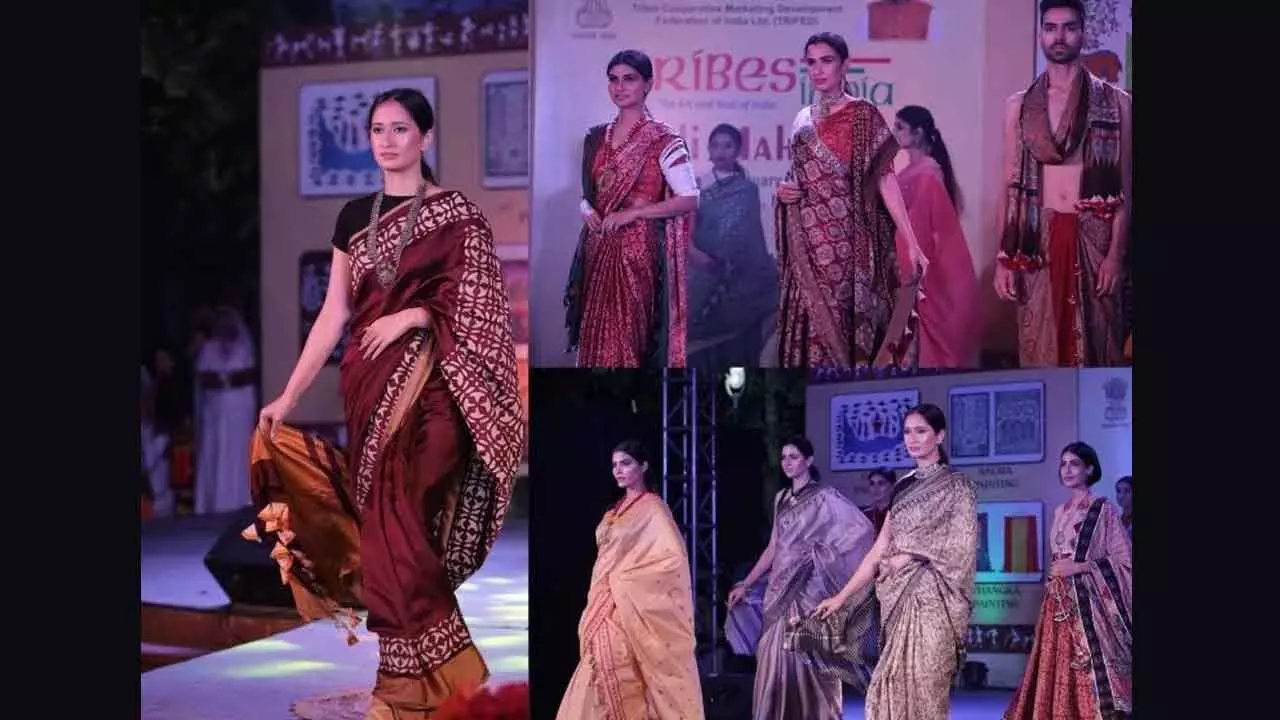India Looks To Become The Epicentre Of Fashion, While Riding On The ‘Premiumization’ Phenomenon
Being a consumer-demand-driven economy, private consumption in India accounts for over 60% of GDP
India Looks To Become The Epicentre Of Fashion, While Riding On The ‘Premiumization’ Phenomenon

The tax relief announced in the Union Budget 2025 benefits the middle class. It increases disposable income, further fuelling demand across essential and aspirational categories—from designer bags to swanky cars and bespoke experiences
The global luxury industry has nine significant segments, with luxury cars, luxury hospitality, and personal luxury goods accounting for over 80 per cent of the market. Statista reports that India’s largest segment is luxury watches and jewellery, which will have a volume of $11.65 billion this year.
India accounts for 3.7 per cent of the global population of affluent individuals, ranking fourth behind the United States (905,413 HNWIs), China (471,634), and Japan (122,119). As India’s ultra-high-net-worth population continues to expand, new opportunities will emerge for global luxury brands to establish a stronger presence in the Indian market. Sectors such as superyachts, in particular, remain largely untapped and hold significant potential for growth.
India is primarily a consumer-demand-driven economy, with private consumption accounting for above 60 per cent of GDP. That said, as incomes rise and technology expands access, consumer behaviour constantly shifts towards premium and digital experiences, leading to the trend called ‘premiumization of consumption.’
Similar to the surge in demand witnessed in China in the early 1980s, India is currently experiencing a notable uptick in the desire for luxury goods.
A Goldman Sachs 2024 report on ‘India’s affluent population’, highlights the rapid growth in the wealth of affluent Indians and that this will increase from around 60 million in 2023 to 100 million people by 2027, or even more.
Indian consumer spending on luxury goods is forecast to reach $32 billion by 2030. The luxury market’s consumer base may expand to 500 million by the same year. Wealth levels are rising, and many high-income taxpayers are driving the luxury market. Further, the tax relief announced in the Union Budget 2025 benefits the middle class. It increases disposable income, further fuelling demand across essential and aspirational categories—from designer bags to swanky cars and bespoke experiences.
The so-called “mass affluent” are no longer just observing luxury from afar. A report by People Research on India’s Consumer Economy (PRICE) and India’s Citizen Environment, a not-for-profit think tank, earlier quoted that by 2047, India’s middle class is expected to constitute 61 per cent of the total population. The rich will grow from 0.5 per cent in 2004-05 to 26 per cent by 2047, significantly widening the pool of potential luxury consumers.
So, with evolving consumer preferences, the luxury landscape in India continues to expand. In 2024, India’s luxury jewellery and watch sectors experienced significant growth. According to Deloitte, the jewellery sector glittered at $80–$85 billion in FY24 and is set to rise to $225–$245 billion by FY35—thanks to rising disposable incomes, evolving tastes, and strategic market expansions. Meanwhile, the country’s luxury retail market, valued at $8 billion, is expected to grow to $14 billion by 2032.
Luxury watches are ticking up fast! Watchmakers are increasingly focusing on India as a key market, driven by Gen Z and millennials, who prioritise luxury experiences and products.
Swiss luxury watchmaker IWC Schaffhausen recently opened its first boutique in India, at Jio Mall in Mumbai. Then Breitling launched boutiques in Chennai and Pune, having opened its first Indian store in Hyderabad in 2023.
The phenomenon of “premiumization” extends beyond jewellery and watches to automobiles, where manufacturers are witnessing a surge in demand for high-end features such as advanced safety systems and vehicle comfort-enhancing technologies.
It’s not just designer labels and five-star vacations anymore. India’s love affair with luxury cars is also in full swing.
Mercedes-Benz and BMW are smashing sales records, especially in smaller cities where aspirational buyers are stepping up.
According to a statement from BMW Group India, the i7 was the largest-selling EV in its class, with 384 units sold. The company added that it has also delivered 3,000 EVs till January 2025, becoming the first luxury car manufacturer in the country to reach this milestone. The BMW iX is India’s most popular luxury EV, with over 1,100 units sold.
The surging luxury sector presents substantial investment opportunities. Global brands are setting up shop, and real estate developers are capitalising on the demand for premium commercial spaces.
The market is ripe for partnerships between foreign luxury retailers and Indian companies, which would ensure that global opulence gets a local twist. So, whether it’s high-end fashion, luxury automobiles, or premium real estate, the future is glamorous and distinctly Indian.
Across the globe, luxury brands are also redefining their narratives to include sustainability. Leading names like Gucci, Prada, and Burberry have already made substantial commitments to reducing their carbon footprints, sourcing sustainable materials, and ensuring ethical production practices.
These brands understand that luxury is not just about exquisite products but also about the responsibility that comes with their creation.

